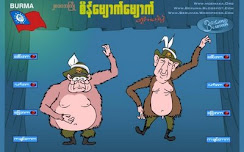DICTATOR WATCH
(www.dictatorwatch.org)
Contact: Roland Watson, roland@dictatorwatch.org
ISIS REPORT ON BURMA’S NUCLEAR PROGRAM
January 31, 2010
Please forward.
http://isis-online.org/isis-reports/detail/burma-a-nuclear-wanabee-suspicious-links-to-north-korea-high-tech-procureme/
This is a new report from ISIS - the Institute for Science and
International Security, on the putative involvement of Burma's military
junta, the SPDC, in nuclear proliferation. The report's breadth and
precision are greatly appreciated. The information on the
computer-controlled machine tools, Namchongang, and New East, is very
valuable.
(We would like to know, though, which companies from Germany, Switzerland
and Japan exported the machine tools to Burma, and what specific machines
were involved.)
As the report mentions me and Dictator Watch, I have a few other
comments/clarifications:
Not all "evidence" about the SPDC's nuclear program has been made public.
It is a bit strong to say that we "claimed" that the Myit Nge River site
was a uranium mine and mill. If you look at the Dictator Watch photo
essay, I used the verb "suspected." I noted that the mine could be a
quarry for construction materials, and was aware of the cement facility
possibility for the nearby mill. But, I also secured the opinion of an
academic who is a uranium expert, who said that from the images one
couldn't be sure what the facility was for, and that uranium milling
couldn't be ruled out.
We put the images out in the hopes that someone would conclusively
identify the facility's purpose.
It is also important to note that it was under construction at the time.
Further, information about this site came from a different channel than
our other intelligence.
I would say, however, that the photo ISIS located of the Chinese team at
the site is definitive. This is likely the facility that is producing the
cement for Naypyidaw, including its tunnels.
About the defectors, the ISIS report is unclear.
"Dictator Watch head Roland Watson claims that much of Ball and Thorton’s
information was published earlier by Dictator Watch, relying on the same
defectors."
Regarding the closing clause of this statement, there have been three
defectors that we are aware of, at least as of last summer. Ball and
Thornton published the source they called Moe Jo, whom we previously had
published, but without identification. They also had Tayza's accountant,
who they called Tin Min.
Our reports are based on Moe Jo, the other, third defector, and other
sources as well.
Points about the SPDC's program that we believe are important but that are
not being given sufficient attention:
- The extent of the nuclear facilities in the Thabeikkyin area. (We
haven't been able to locate satellite imagery for these facilities,
although we are confident that they are there.)
- The bartering of yellowcake by the SPDC. (The ISIS article, quoting a
European intelligence official, denies the milling of yellowcake - our
sources disagree.)
- The acquisition by the SPDC of North Korean SRBMs.
- What really happened with the NK cargo flight that recently landed in
Bangkok, and what was the full manifest for the 35 tons of cargo. (We
received a report - we stress that it is unconfirmed - that the flight was
bound for Burma but that U.S. jets forced it to enter Thai airspace after
which Thai jets forced it to land. If this is true, the shipment could
have been a second attempt to deliver the cargo carried by the Kang Nam 1
freighter last summer.)
- The acquisition by the SPDC of nuclear weapon components, along the
lines described in the recent revelation by the Washington Post that China
supplied enough enriched uranium for two atomic bombs to Pakistan in 1982.
- Why the U.S. won't publish the JADE Act Section 10 Report on Military
and Intelligence Aid to Burma. The first edition of this annual report was
never made public, contrary to the terms of the law. We are now entering
the second year for which it is due. (The ISIS report should have
mentioned this.)
The U.S. knows a lot more than it is saying. There is a cover-up. The ISIS
policy recommendations are based on only part of the information that the
U.S. has available.
The Institute for Science and International Security report on Burma
Monday, 1 February 2010
Subscribe to:
Post Comments (Atom)









No comments:
Post a Comment